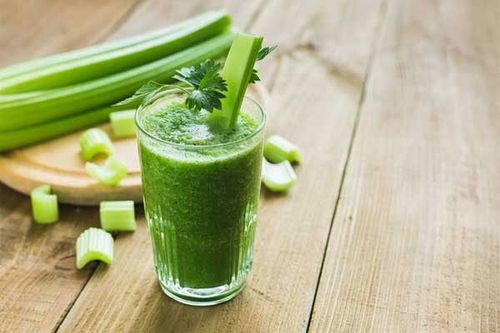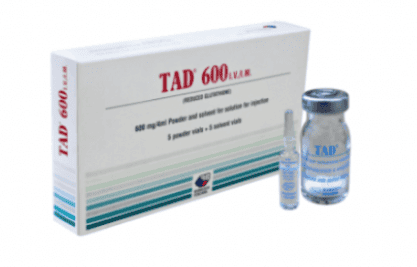Celery juice is rich in nutrients and has many health benefits. Knowing how to use celery juice will help you have good health and beautiful skin.
1. Nutritional composition of celery juice
Because most of the plant fiber has been removed, celery juice contains more nutrients per serving than whole celery (not juiced). 1 cup of celery juice (240ml) provides 42.5 calories, 2g protein, 9.5g carbs, 5g sugar, 8% of daily calcium needs, 7% of daily magnesium needs, 5% of daily phosphorus needs, 14% of daily potassium needs, 9% of daily calcium needs, 7% of daily vitamin A needs, 16% of daily vitamin C needs and 74% of daily vitamin K needs. In addition, it also contains many other nutrients such as zinc, copper, folate, biotin, B vitamins and many antioxidants.
2. Health benefits of celery juice
2.1 Provide water for the body
Celery juice is mainly composed of water and helps keep the body hydrated. Staying hydrated is essential for controlling blood pressure, body temperature, brain function, nutrient supply, waste excretion and kidney health.
2.2 Less sugar
Celery juice is healthier than sugary drinks. A 240ml cup of celery juice only provides 5g of natural sugar. Meanwhile, sugary drinks such as soda, energy drinks, and coffee account for up to 50% of added sugar in the diet, and can add 500 calories/day more to the total calorie intake. Therefore, low-sugar drinks like celery juice can significantly reduce the amount of sugar and calories the body consumes during the day.
2.3 Anti-inflammatory properties
Celery juice contains various plant compounds that can reduce inflammation. These compounds act as antioxidants, helping to reduce oxidative stress (a condition that occurs when free radicals accumulate in the body). Diets rich in antioxidants (including celery juice) have been linked to a lower incidence of chronic diseases such as heart disease, diabetes, obesity, and some cancers. They also help improve skin health.

3. The Problem with the View: Celery Juice Detoxes
Celery juice detoxes have become a trend, but the effects seem to be overblown and not based on clear scientific evidence.
3.1 Misconceptions
Celery juice has become increasingly popular, partly due to Anthony William, a self-proclaimed health expert with no background in nutrition or medicine.
Williams and others claim that celery juice is a cure-all for chronic diseases due to “undiscovered cluster salts” that can kill harmful bacteria in the intestines. However, there is no scientific evidence for the existence of these salts. Furthermore, there are only a few studies on the effects of celery juice on acne, diabetes, liver disease, and weight loss.
Finally, it should be stated that celery juice does not detoxify. Your body has a natural detoxification system that includes the liver, kidneys, intestines, and lungs.
3.2 What does a detoxification diet require?
Although some people may notice health benefits when they drink celery juice to detoxify their bodies. But this may be due to lifestyle changes such as limiting processed foods, exercising regularly, etc.
To follow a celery juice diet, you should drink about 475ml of celery juice every morning on an empty stomach, and about 710 - 945ml if you have a chronic disease. After that, you continue to maintain a healthy diet throughout the day. Many people consider the celery juice diet as a 10-day detox, while others follow it for longer. However, this diet tends to promote excessive calorie restriction, which can lead to dangerous weight loss, hunger, and nutrient deficiencies.
4. Limitations of Celery Juice
Although nutritious, celery juice also has some limitations:
4.1 High salt content
A cup of 240ml celery juice contains about 215mg of sodium. Since most healthy people need to limit their daily sodium intake to no more than 2,300mg, there is no need to drink too much celery juice. Moreover, excess drinking of celery juice can also increase the body's sodium level dangerously. In particular, people on a low-salt diet should avoid drinking celery juice.

4.2 Low in fiber
Celery juice is filtered to remove the fiber. Fiber is a healthy nutrient that helps keep you full for a long time. Without fiber, your body will digest celery juice quickly, making you feel hungry sooner. For example, replacing a nutritious, fiber-rich breakfast with celery juice can cause you to eat more calories during the day.
In addition, fiber also has many health benefits such as maintaining weight, intestinal health, and reducing cholesterol and blood sugar. Celery juice does not have much fiber, so it does not take advantage of these benefits.
5. How to make celery juice
If you want to add celery juice to your diet, you can make it at home with a simple method. Using a fruit machine is the simplest method to make celery juice. You just need to wash 3 - 4 celery stalks, put them in the fruit machine and you will have a cup of celery juice.
If you do not have a fruit machine, cut 3-4 stalks of celery that have been washed and then pureed. Next, place a sieve or mesh cloth over a wide-mouthed jar, pour the blended liquid over, filter the juice, and discard the pulp. For added flavor, you can add green apples, fresh ginger, or lemon juice together.
When to drink celery juice? How to drink celery juice? The way to use celery juice is to drink it during a meal with a full range of dishes that provide fiber, healthy fats, and protein.
Celery juice is low in sugar, and high in potassium, and vitamins A, C, and K. This drink has many health benefits. You can consider it as a part of your healthy diet to improve your health, skin, and appearance.
To arrange an appointment, please call HOTLINE or make your reservation directly HERE. You may also download the MyVinmec app to schedule appointments faster and manage your reservations more conveniently.
Reference source: healthline.com
To arrange an appointment, please call HOTLINE or make your reservation directly HERE. You may also download the MyVinmec app to schedule appointments faster and manage your reservations more conveniently.








